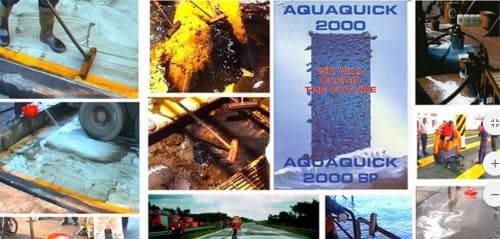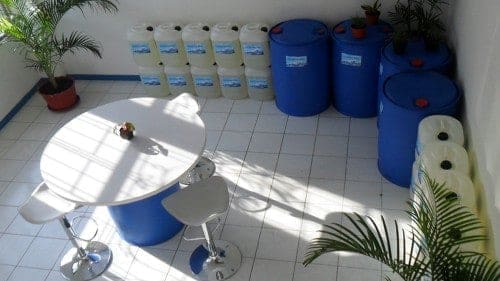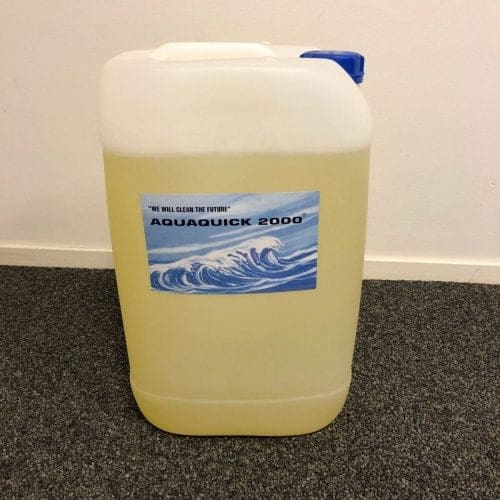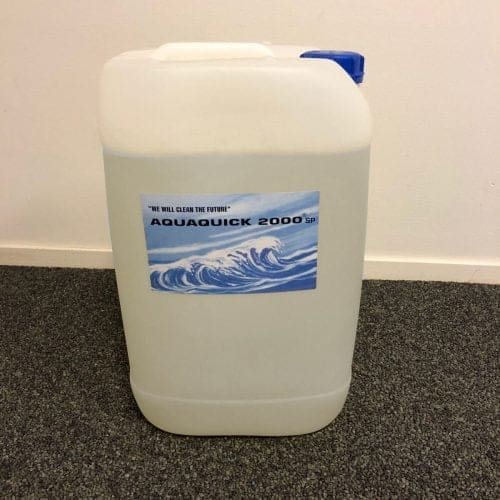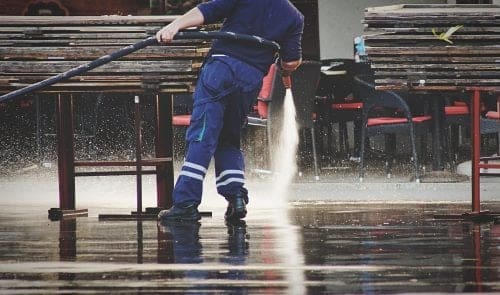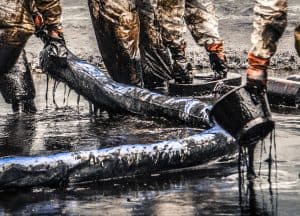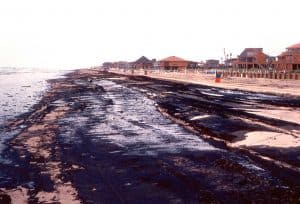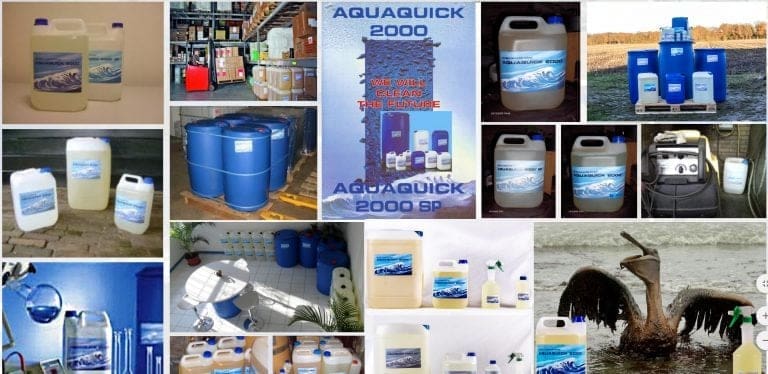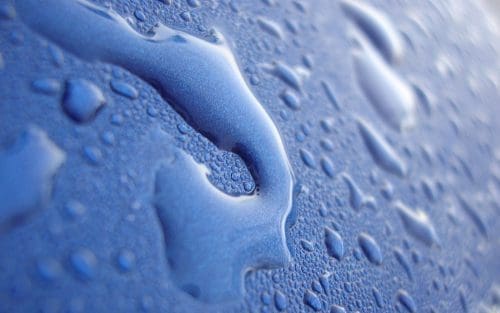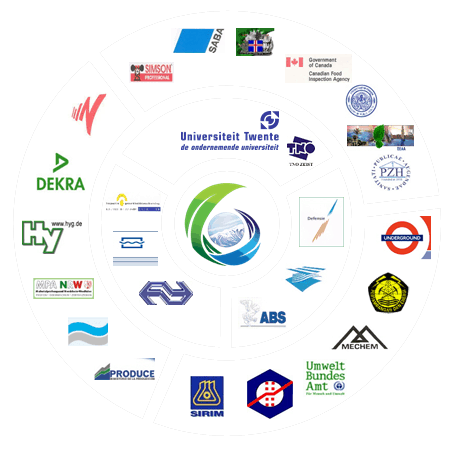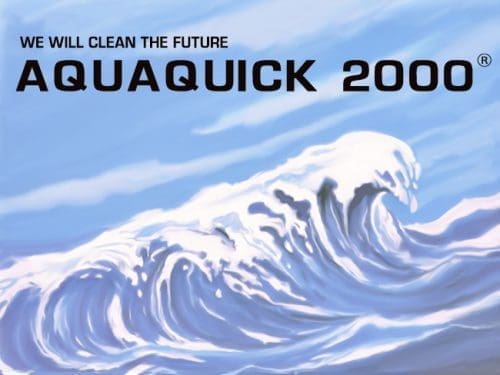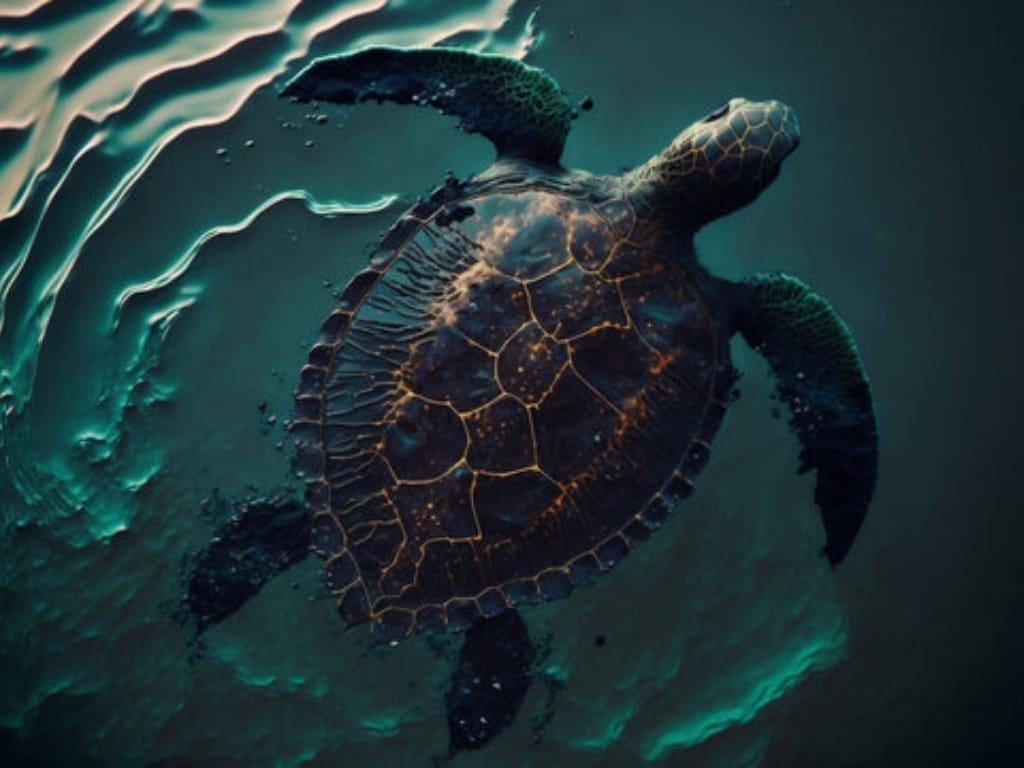Oil spills constitute a significant threat to marine ecosystems worldwide, inflicting severe harm on marine life and coastal communities. However, proactive measures and effective solutions can mitigate these impacts and protect our oceans’ delicate balance. In this comprehensive guide, we will explore actionable strategies aimed at minimizing the devastation caused by oil spills and preserving the biodiversity of our marine environments.
How do oil spill happens at sea?
Oil spills at sea represent catastrophic events with profound ecological, economic, and social consequences. Understanding the causes and mechanisms underlying these incidents is crucial for developing effective prevention and response strategies. In this comprehensive exploration, we delve into the various factors contributing to oil spills at sea and the complex mechanisms through which these spills occur.
- Maritime Transportation: One of the primary causes of oil spills at sea is maritime transportation, including the shipping of crude oil and refined petroleum products. Tanker accidents, collisions, and groundings pose significant risks, resulting in the release of large quantities of oil into marine environments. The sheer volume of oil transported globally makes maritime transportation a major contributor to oil spill incidents. Tanker accidents often occur due to human error, adverse weather conditions, equipment malfunctions, or navigational errors. Collisions between vessels, particularly in congested shipping lanes or during adverse weather conditions, can rupture tanker hulls, leading to oil spills. Groundings occur when vessels run aground on reefs, shoals, or coastlines, causing hull breaches and oil leaks.
- Offshore Drilling Operations: Offshore drilling activities for oil and gas exploration and production present inherent risks of oil spills. Accidents, equipment failures, and blowouts during drilling operations can lead to uncontrolled releases of oil into the marine environment. Deepwater drilling operations, in particular, carry elevated risks due to the complexities of operating in deep-sea environments. Blowouts, such as the Deepwater Horizon incident in the Gulf of Mexico in 2010, occur when the pressure of underground oil and gas reservoirs exceeds the capacity of the well’s control systems. Blowouts can result in the uncontrolled release of oil and gas, posing significant environmental and economic consequences.
- Pipeline Leaks and Breakages: Oil pipelines play a crucial role in transporting oil from production facilities to refineries and distribution centers. However, pipeline leaks, ruptures, and corrosion can result in oil spills both on land and at sea. Subsea pipelines, in particular, are susceptible to damage from external factors such as seismic activity, erosion, and marine vessel anchoring. Corrosion of pipeline materials over time can weaken pipeline integrity, leading to leaks and ruptures. Inadequate maintenance, improper installation, and external damage from human activities or natural disasters can also contribute to pipeline failures and oil spills.
- Illegal Discharges and Dumping: Despite regulatory measures, illegal discharges and deliberate dumping of oil at sea continue to occur, primarily by vessels seeking to evade environmental regulations or cut costs associated with proper disposal. These illicit activities contribute to oil pollution in marine ecosystems, compromising water quality and endangering marine life. Illegal discharges may involve the use of bypass systems, concealed discharge outlets, or falsified logbooks to conceal illicit activities from authorities. Deliberate dumping of oily waste or ballast water containing oil residues further exacerbates the problem of oil pollution in marine environments.
- Natural Disasters: Natural disasters such as hurricanes, typhoons, and tsunamis can trigger oil spills by damaging offshore drilling platforms, storage facilities, and tanker vessels. Severe weather conditions and geological events can cause vessel collisions, grounding, and structural failures, leading to oil release into the sea. Hurricanes and typhoons can generate powerful winds, storm surges, and heavy rainfall, posing significant risks to offshore oil and gas infrastructure. Tsunamis, resulting from underwater earthquakes or volcanic eruptions, can inundate coastal areas and disrupt oil production, storage, and transportation activities, increasing the likelihood of oil spills.
Mechanisms of Oil Spills
- Tanker Accidents: Tanker accidents, including collisions with other vessels, groundings on reefs or shoals, and structural failures, are among the most common mechanisms of oil spills at sea. The rupture or breach of tanker hulls results in the release of oil into the marine environment, posing immediate threats to coastal ecosystems and communities.
- Blowouts and Well Control Failures: During offshore drilling operations, blowouts occur when the pressure exerted by underground oil and gas reservoirs exceeds the capacity of the well’s control systems. Blowouts can lead to uncontrolled releases of oil and gas into the ocean, as witnessed in high-profile incidents such as the Deepwater Horizon disaster in the Gulf of Mexico.
- Pipeline Failures: Pipeline failures, including leaks, ruptures, and corrosion-related breaches, can occur due to mechanical failures, inadequate maintenance, or external damage. Subsea pipelines are particularly vulnerable to damage from marine activities, natural hazards, and geological shifts, resulting in oil spills along pipeline routes.
- Illegal Discharges: Deliberate discharge of oil at sea by vessels seeking to circumvent environmental regulations or reduce operating costs contributes to oil pollution in marine environments. Illegal discharges may involve the use of bypass systems, concealed discharge outlets, or falsified logbooks to conceal illicit activities from authorities.
- Natural Disasters: Natural disasters such as hurricanes, typhoons, and earthquakes can trigger oil spills through the destruction of offshore infrastructure, vessel collisions, or grounding incidents. Severe weather conditions and geological events disrupt oil production, storage, and transportation activities, exacerbating the risk of spills.
Understanding the Impact
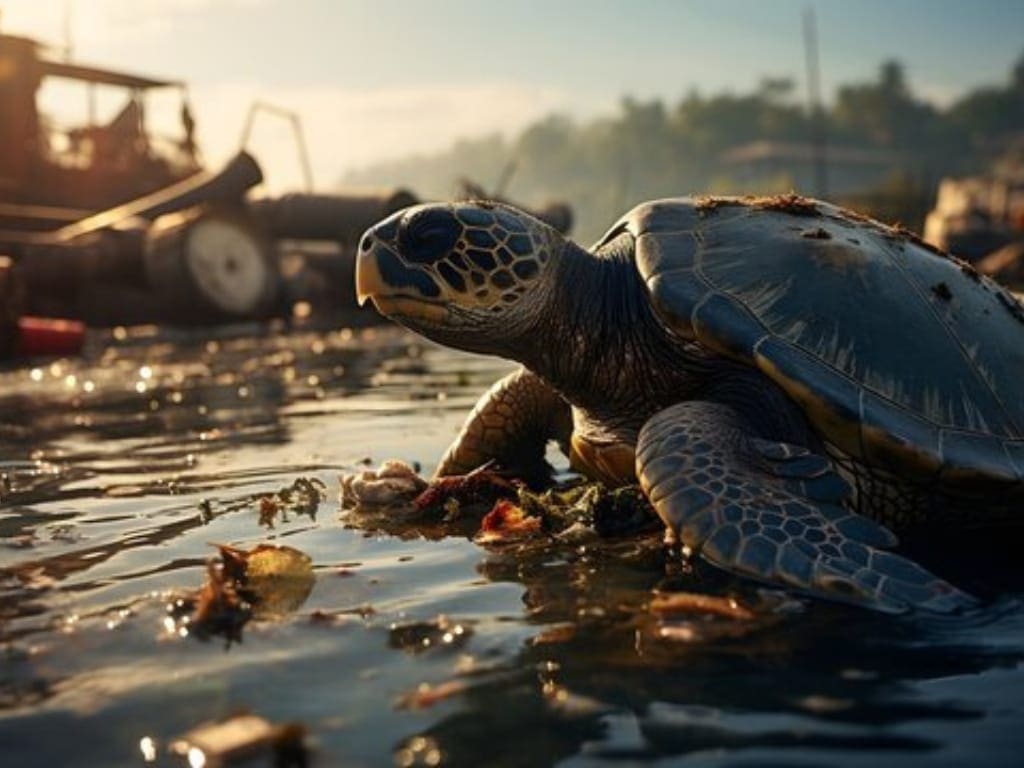
Oil spills disrupt marine ecosystems in multifaceted ways, endangering diverse species and habitats. Seabirds, sea otters, fish, coral reefs, and other marine organisms suffer dire consequences. Oil coats the feathers and fur of birds and mammals, impairing their insulation and leading to hypothermia. Dolphins, whales, and fish face respiratory issues and reproductive impairments due to oil inhalation and ingestion. Moreover, oil-contaminated seafood poses health risks to humans, underscoring the interconnectedness of marine ecosystems and human well-being.
Oil Spill Solutions
Prevention:
- Enhanced Regulations: Implementing stringent regulations governing maritime activities, such as shipping and drilling operations, is crucial to minimizing the risk of oil spills. Regular inspections and penalties for violations should be enforced to ensure compliance.
- Advanced Technologies: Investing in innovative technologies, such as double-hull tankers and automated monitoring systems, can help prevent spills and detect leaks promptly. Remote sensing technologies aid in early detection and response.
- Environmental Impact Assessments: Conducting thorough environmental impact assessments before offshore drilling and shipping activities is essential to identifying potential risks and mitigating them proactively. Stakeholder engagement and public consultation are integral to addressing community concerns and ensuring sustainable practices.
Preparedness:
- Emergency Response Plans: Developing comprehensive emergency response plans at local, national, and international levels is essential for facilitating coordinated efforts in the event of an oil spill. Establishing clear chains of command and communication protocols enhances response efficiency.
- Training and Drills: Regular training exercises for spill response teams ensure proficiency in deploying containment and cleanup measures. Simulating various scenarios and incorporating lessons learned enhance preparedness and resilience.
- Stockpiling Resources: Stockpiling essential resources, such as booms, skimmers, dispersants, and personal protective equipment, in strategic locations facilitates rapid deployment during emergencies. Collaboration with industry stakeholders and government agencies ensures resource availability.
Containment and Cleanup:
- Restoration:
- Mechanical Skimming: Deploying booms and skimmers to contain and skim oil from the water’s surface minimizes its spread and impact on marine life. Specialized vessels equipped with sorbent materials and vacuum systems aid in efficient oil recovery.
- Manual Cleanup: Mobilizing manual cleanup crews to remove oil from shorelines and sensitive habitats is crucial. Techniques such as sorbent materials, bioremediation, and manual removal should be employed. Prioritizing areas with high ecological value maximizes conservation outcomes.
- Wildlife Rehabilitation: Establishing wildlife rehabilitation centers equipped to treat and rehabilitate oil-affected animals, including birds, mammals, and sea turtles, mitigates mortality rates. Collaboration with veterinary experts, conservation organizations, and volunteers is vital for providing specialized care and support.
- Ecological Assessment: Conducting comprehensive ecological assessments to evaluate the extent of damage caused by the oil spill informs restoration efforts. Monitoring key indicators of ecosystem health guides adaptive management strategies.
- Habitat Restoration: Implementing habitat restoration projects to rehabilitate affected ecosystems, including coral reefs, mangroves, and coastal wetlands, promotes biodiversity recovery. Utilizing native species and ecosystem-based approaches enhances resilience and functionality.
- Long-Term Monitoring: Establishing long-term monitoring programs to track the ecological recovery of oil-impacted areas is crucial. Engaging local communities, academic institutions, and government agencies in participatory monitoring initiatives fosters stewardship and accountability.
How Mechanical Oil Spill Cleanup Is Done?
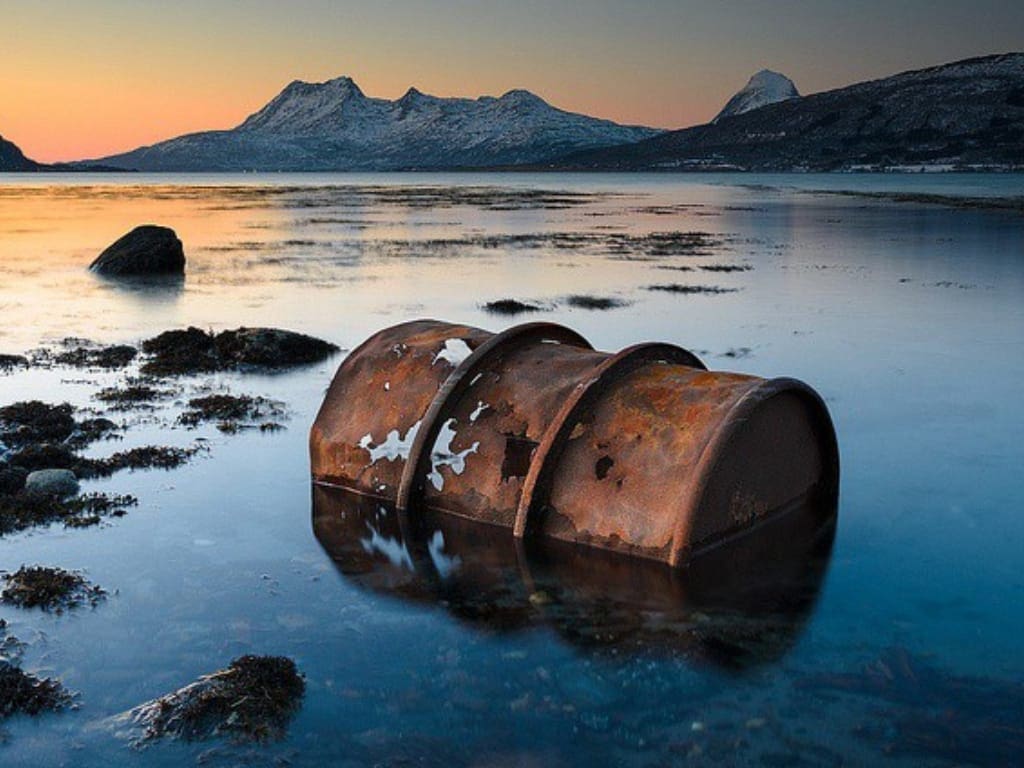
Oil spills pose a significant threat to marine ecosystems, necessitating prompt and efficient cleanup efforts to minimize environmental damage. In this guide, we explore effective strategies for oil spill cleanup, highlighting innovative technologies and best practices to protect marine environments and mitigate the impact of oil pollution.
Mechanical cleanup methods involve the physical removal of oil from the water’s surface and affected shorelines using specialized equipment and techniques. Key mechanical cleanup methods include:
- Skimming: Skimming involves the use of boats equipped with skimmers to collect oil from the water’s surface. Skimmers can range from floating barriers with conveyor belts to vacuum systems that suction oil directly from the water.
- Sorbents: Sorbent materials such as absorbent pads, booms, and pom-poms are used to absorb and contain oil. These materials can be deployed on the water’s surface to soak up oil or placed on affected shorelines to absorb oil washed ashore.
- Manual Cleanup: Manual cleanup involves the labor-intensive removal of oil from shorelines and sensitive habitats using tools such as shovels, rakes, and absorbent materials. Manual cleanup crews work to remove oil and tar balls from beaches, rocks, and vegetation.
- In-Situ Burning: In-situ burning involves igniting oil slicks on the water’s surface to burn off the oil. This method can be effective for removing large quantities of oil quickly, but it also produces air pollution and requires careful coordination to minimize environmental impacts.
What Other Oil Spill Methods Are Preferred?
- Chemical Dispersants: Chemical dispersants are substances that break up oil into smaller droplets, enhancing its dispersion and biodegradation in the water column. Dispersants are typically applied to oil slicks using aerial spraying or surface dispersant injection systems. While dispersants can accelerate oil degradation, their use can also introduce toxic chemicals into the marine environment and pose risks to marine life.
- Biological Cleanup Methods: Biological cleanup methods involve the use of naturally occurring microorganisms to biodegrade oil and remove it from the environment. Key biological cleanup methods include:
- Bioremediation: Bioremediation involves the introduction of oil-degrading microorganisms to contaminated areas to accelerate oil degradation. These microorganisms break down oil into harmless byproducts through natural metabolic processes, helping to restore affected ecosystems.
- Bioaugmentation: Bioaugmentation involves the addition of specialized microbial cultures to contaminated sites to enhance oil degradation rates. These microbial cultures are selected for their ability to degrade specific types of oil and thrive in marine environments.
- Phytoremediation: Phytoremediation involves the use of oil-absorbing plants to remove oil from contaminated soil and water. Oil-absorbing plants such as mangroves, marsh grasses, and algae can absorb oil through their roots and store it in their tissues, reducing oil concentrations in the environment.
Shoreline Cleanup and Protection
Shoreline cleanup and protection efforts focus on removing oil from affected shorelines and implementing measures to prevent further contamination. Key shoreline cleanup and protection measures include:
- Containment Booms: Containment booms are floating barriers deployed around affected shorelines to contain and prevent the spread of oil. Booms can be anchored in place or used in conjunction with skimmers to collect oil from the water.
- Manual Cleanup: Manual cleanup crews work to remove oil and tar balls from beaches, rocks, and vegetation using shovels, rakes, and absorbent materials. Shoreline cleanup efforts are often labor-intensive and require careful coordination to minimize environmental impacts.
- Habitat Restoration: Habitat restoration involves the implementation of measures to rehabilitate and restore affected ecosystems, including replanting vegetation, removing debris, and enhancing natural habitats. Habitat restoration efforts help to promote ecosystem recovery and resilience following an oil spill.
Conclusion
Effective oil spill cleanup requires a multi-faceted approach encompassing mechanical, chemical, and biological methods, as well as shoreline cleanup and protection measures. By employing a combination of innovative technologies and best practices, we can minimize environmental damage and protect marine ecosystems from the devastating impacts of oil pollution. Collaboration between government agencies, industry stakeholders, and environmental organizations is essential to ensuring prompt and efficient cleanup efforts and safeguarding the health and resilience of our oceans for future generations.

